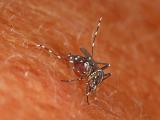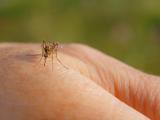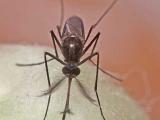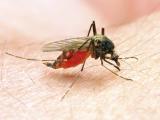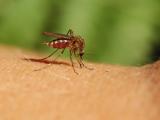Aug 29, 2012 (CIDRAP News) – The nation's number of West Nile virus (WNV) infections climbed 40% over last week's total, and though the country is in the midst of one of its worst years for the disease, hurricane rains aren't expected to have a big impact on the epidemic, a federal health official said today.
Lyle Petersen, MD, MPH, who directs the Centers for Disease Control and Prevention's (CDC's) Division of Vector-Borne Infectious Diseases, said at a media briefing that the number of WNV infections rose to 1,590, including 889 cases of the neuroinvasive form of the disease. So far 66 deaths have been reported.
The continued rise in infections has been seen in previous WNV epidemics, and cases will probably continue to accumulate through October, he said. So far 43 states have reported at least one human infection, up from 38 the week before. Petersen said so far Hawaii and Alaska are the only states that haven't reported any WNV findings in birds, horses, or humans.
The nation is on track to approach levels seen in 2002 and 2003, when about 3,000 cases of neuroinvasive disease and 260 deaths were reported each year, he said. The CDC said the number of WNV cases is the highest reported through the last week of August since the virus was first detected in the United States in 1999.
Petersen said hurricanes like Isaac, which was battering Gulf coast states as he spoke, and other flooding events don't typically have a noticeable effect on WNV outbreaks. Major rains and flooding can disrupt regional ecology and interrupt the transmission cycle between birds and mosquitoes.
He said Culex mosquitoes that transmit WNV prefer small nutrient-rich pools of water, and that big rainfalls can wash away the small pools, eliminating breeding grounds. "In the end, some breeding sites are eliminated and others are created," he said.
After Hurricane Katrina, which made landfall on the Gulf coast exactly 7 years ago, health officials saw a small increase in WNV infections that were likely linked to increased outdoor exposure as residents and workers faced the elements during displacement and rebuilding periods, Petersen said, adding that the CDC has reached out to states being affected by Hurricane Isaac.
More than 70% of the WNV cases this year are from six states: Texas, South Dakota, Mississippi, Oklahoma, Louisiana, and Michigan, according to the CDC. Roughly half of all cases have been reported from Texas, particularly the Dallas County area.
David Lakey, MD, commissioner of the Texas Department of State Health Services (TDSHS), told reporters at the media briefing that he's not convinced that disease activity has peaked in the state, but it may have reached a plateau. He predicted the state's number of cases this year will top record cases seen in 2003.
Aerial spraying activities around the Dallas County area wrapped up last week and covered 875,000 acres, Lakey said. He added that authorities should have information to report this week on the impact the intervention had on mosquito populations.
Lakey said WNV hotspots exist in other Texas counties, such as Denton, which has a smaller population than Dallas County but a higher incidence of WNV. He said aerial spraying will begin in some of the county's cities tomorrow night.
As of Aug 27, Texas had recorded 783 WNV infections, including 416 cases of neuroinvasive disease and 31 deaths.
So far, health officials don't fully understand why the WNV epidemic in Texas this year has been so bad, Lakey said.
Petersen said heat waves play a role, a pattern seen in 2002 and 2003, but some summers have had heat waves without surges in WNV activity. Transmission dynamics are complicated and depend on factors such as susceptibility to the virus in birds, which he said is difficult to measure.
See also:
CDC WNV home page
Aug 22 CIDRAP News story "CDC reports surge in US West Nile virus activity"
TDSHS WNV case total
